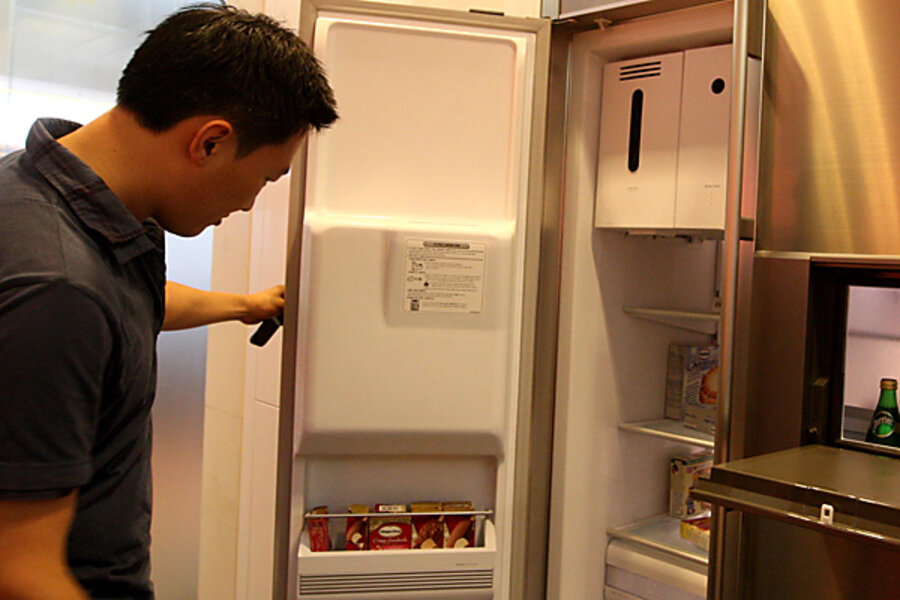Freeze your credit cards—in ice cubes
Loading...
This week, The Simple Dollar is running a short series on some of the key moments in my financial turnaround and how you can experience those moments as well. For a full description of this, see the first article in the series.
Once I had the credit cards out of my wallet, I found that I was forced to think about my purchases more carefully when I was out and about. However, the problem was not solved when I was at home.
The challenge, of course, was the internet. I’d visit a website, see something interesting, and then find myself quickly whipping out my card and typing in the number.
Alternately, simply having them out and easily available meant that sometimes I’d just slip one in my pocket when I was out and about, using it to buy gas and, often, to buy unnecessary things. While not having the cards in my wallet helped greatly with impromptu impulse purchases, it didn’t help when I talked myself into being impulsive before I even left the house.
It was time to move onto stiffer measures.
Block Your Cards
The goal, in the end, is to make sure that every time you purchase something on credit, you’re giving that purchase some careful thought. Removing your credit cards from your wallet is a good first step, but if they’re just sitting in a drawer and easily accessed, additional steps are needed.
My solution was simple: I blocked my card use by making their usage more difficult using various physical and emotional means.
Here are three techniques I used, all with degrees of success.
Freeze them
Just take out a freezer-safe dish (a large Ziploc freezer bag can work pretty well for this), add some ice cubes to it, then put your credit cards on top of the ice cubes. Add water until the credit cards are completely submerged, then put the container in the freezer. What you’ll end up with is a giant ice cube that has your credit cards in the middle.
In order to retrieve your cards, you’re either going to have to melt the large ice cube or you’re going to have to smash the ice cube, likely making a pretty good mess. In either case, you’re going to have to spend some time doing this, forcing you to think about the reasons for which you’re trying to get these cards out of the ice.
Hide them
Another option is to simply hide the cards in a hard-to-reach place in your home – or in a safe external place, like your safe deposit box.
For me, a great place to hide stuff is in our attic. The only way to access the attic is through a portal at the top of our bedroom closet, which is essentially impossible to access without a ladder. Thus, to get into the attic, I have to go to the garage, get a ladder, carry it up the stairs to the bedroom, set it up, climb up there, open the attic portal, get into the attic, then rummage around for the things I’m looking for.
During this process, I have plenty of time to think about why I’m retrieving the cards and, often, I can talk myself right out of it.
Wrap them in pictures
A final approach that worked for me was to use an emotional block of sorts. I simply take a 4″ by 6″ snapshot photo of my children and use it as a “wrapper” for each credit card by placing the card in the center of the back of the photo, then folding the edges so that it forms something of an “envelope” around the card.
When I do this, whenever I go to retrieve a card, I’m forced to look at the pictures of my kids, who really are the inspiration for many of the positive choices I make in my life. Their picture tells me that I should really consider making a better choice, both for their sake as well as for my own long-term viability so that I can be there for them.
Obviously, you can use whatever picture you’d like for this purpose: an image of a long term goal you have, someone you deeply love, or anything else. The key is to use an image that will make you hesitate before using that card.
The key here is to slow down your ability to just grab a credit card and use it, forcing you to think more carefully about your purchases in real time. Such a move will do nothing but help you if you’re struggling to get your spending under control.
Add/view comments on this post.
------------------------------
The Christian Science Monitor has assembled a diverse group of the best economy-related bloggers out there. Our guest bloggers are not employed or directed by the Monitor and the views expressed are the bloggers' own, as is responsibility for the content of their blogs. To contact us about a blogger, click here. To add or view a comment on a guest blog, please go to the blogger's own site by clicking on the link above.





